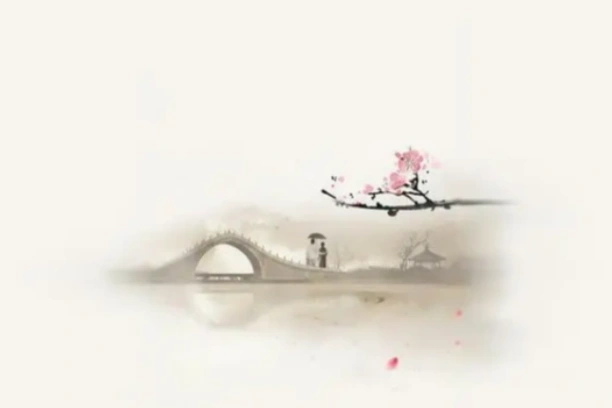
The door of Ch’an is entered by Wu. When we meditate on Wu we ask “What is Wu?” On entering Wu, we experience emptiness; we are not aware of existence, either ours or the world’s.
E-MAIL: admin@relaxmid.com

The term Mo-chao Ch’an 默照禪, Silent Illumination Ch’an is associated with the Sung Dynasty master Hung-chih Cheng-chueh 宏智正覺(1091-l157). However, the practice itself may be traced back at least as far as Bodhidharma. In his treatise The Two Entries and the Four Practices, the Entry by Principle was described as “leaving behind the false, return to the true: make no discrimination of self and others. In contemplation, one is stable and unmoving, like a wall.”
In his verse Hsin hsin ming 信心銘, Affirming Faith in Mind, the Third Patriarch, Seng-Ts’an, 僧燦(?-?) says: The ultimate path has nothing difficult. Simply avoid discrimination and selection… The mind endures one thought for ten thousand years.
“One thought” refers to the mind which is completely clear and free from attachment. “Ten thousand years” is simply a very long time without interruption. We can read similar passages in later descriptions of Silent Illumination.
Master Shih-shuang Ch’ing-chu 石霜慶諸(805-888) lived on a mountain called Shih-shuang for 20 years. His disciples just sat continually, even sleeping in the upright position. In their stillness, they looked like so many dead tree stumps, that they were named “the dry wood sangha.” Shih-shuang has two famous phrases of advice. One was, “To sit Ch’an, fix your mind on one thought for ten thousand years.” The other was, “Let yourself be like cold ashes, or like dry wood.”
Hung-chih himself studied for a while with Master K’u-mu Fa-ch’eng 枯木法成. He was called K’u-mu (dry wood) because when he sat, his body resembled a block of dry wood. In the hands of Hung-chih, this practice evolved into what he called Silent Illumination. He describes “silent sitting” thus: “Your body sits silently; your mind, quiescent, unmoving. This is genuine effort in practice. Body and mind are at complete rest. The mouth so still that moss grows around it. Grass sprouts from the tongue. Do this without cease, cleansing the mind until it gains the clarity of an autumn pool, bright as the moon illuminating the evening sky.”
In another place, Hung-chih said, “In this silent sitting, whatever realms may appear, the mind is very clear as to all the details, yet everything is where it originally is, in its own place. The mind stays on one
thought for ten thousand years, yet does not dwell on any forms, inside or outside.”
How is Silent Illumination different from “outer path” tso-ch’an? In criticizing other path practice, Hui-neng used the phrase chu-hsin kuan-ching 住心觀境, or “fixing the mind on one thing and contemplating that state.” This is a method of samadhi that lacks wisdom. Or more accurately, samadhi is not a method; it is a consequence, or goal of practice. It has no space, no time, no sense of environment. Silent Illumination is different in that, while it keeps the mind still (the silent aspect), it is clear about the inner as well as the outer states (the illumination aspect). Samadhi is silent but not illuminating. In Silent Illumination there is no abiding (chu), that is, nothing to dwell on, no place to dwell in. In the deep level of Silent Illumination, the mind is not influenced by or disturbed by the environment. However, it is not fixed in samadhi, but is in a bright state of ming 明, or illumination. In Silent Illumination the meditator works continually to maintain this ming.
To understand Mo-chao Ch’an, it is important to understand that while there are no thoughts, the mind also is still very clear, very aware. Both the silence (mo) and the illumination (chao) must be there. According to Hung-chih, while there is nothing going on in your mind, you are not unaware that nothing is happening. If your mind is unknowing, this is Ch’an sickness, not Ch’an. So in this state, the mind is transparent. In a sense, it is not completely accurate to say there is nothing there, because the transparent mind is there. But it is accurate in the sense that there is nothing there that can become an attachment or obstruction. At this stage, the mind is without form. Its power is there, its function being to fill the mind with illuminating power, like the sun, shining everywhere. Hence, Silent Illumination is the tso-ch’an in which there is nothing moving but the mind is bright, illuminated.
In Zen, the form of zazen called Shikantaza is quite similar to Silent Illumination. It was introduced in Japan by Master Dogen (1200-1252), after his return from study with Ch’an masters in China. In the book Fukanzazenji, The Principles of Zazen for Everyone, he stressed the need for a foundation in the ordinary methods of zazen. While he does not explicitly discuss shikantaza, he does say, “You should therefore cease from practice based on intellectual understanding, pursuing words and following after speech, and learn the backward step that turns your light inwardly to illuminate yourself. Body and mind of themselves will drop away, and your original face will manifest.” For Dogen, the method of shikantaza is to “just sit”, with no thoughts in your mind. So, in a sense, the method is not a method at all, but more of a prescription, or guideline. When thoughts are abandoned, it becomes possible for the mind to illuminate. It is also then possible to experience satori. If such a non-attached state of mind can be maintained, even in daily life, regardless of one’s activity, whether moving or still, you will manifest the wisdom function, the true Ch’an.
PREVIOUS: The Tso-ch’an of Ch’an | TSO-CH’AN
NEXT: Kung-an Ch’an 公案禪 | TSO-CH’AN
